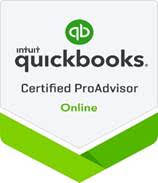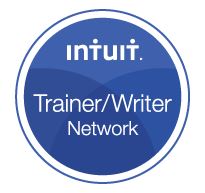Hidden secret? Embezzlement in your business
Many of you will think that your recognize yourselves in this article, however as you all know, I always protect confidentiality of my clients—this article applies to many of my clients. Embezzlement is a heart wrenching event, a huge embarrassment and a blow to business owners’ confidence. It is the “secret” that we never like talking about. New clients have come to me because they have money missing, need their files rebuilt, and they need a system that protects them—many times as a direct result of internal fraud and embezzlement. There is no way to eliminate this issue completely, but there are ways to minimize and protect the possibility of fraud.
According to the Association of Certified Fraud Examiners (ACFE), they project over $3.5 trillion was lost to internal fraud and embezzlement worldwide in 2011 alone. The typical organization loses 5 percent of its revenues each year. While we have a lot to think about as entrepreneurs, we do need to take time to educate ourselves about this unfortunately common business loss.
The Fraud Triangle
An easy way to understand fraud is to learn about the Fraud Triangle. The creation of the Fraud Triangle is credited to Dr. Donald Cressey, a well-respected criminologist and sociologist who made significant contributions to his field.
Three components need to be present in order for fraud to occur:
Motivation or need
Rationalization
Opportunity
When fewer than three legs of the triangle are present, we can deter fraud. When all three are present, fraud could occur more readily.
Motivation
Financial pressure at home is an example of when motivation to commit fraud is present. Sometimes the trusted employee needs just a little bit of money to finish the month. They “borrow” the money and return it. This scenario can be repeated any number of times and sometimes the money is returned; other times not. Or, the employee finds themselves in need of large amounts of cash due to any number of reasons: poor investments, gambling, a flamboyant lifestyle, family requirements, or social pressure. In short, the person needs money and lots of it fast. He/she knows that the business owner doesn’t understand the financial statements and will never even realize it’s missing.
Rationalization
The employee who commits fraud rationalizes the act in their minds:
I’m too smart to get caught.
I’ll put it back when my luck changes.
The big company won’t miss it.
I don’t like the person I’m stealing from.
I’ve worked hard and I’m entitled to it.
At some point in the process, the person who commits fraud loses their sense of right and wrong and their fear of any consequences—usually because it starts small and progressively increases.
Opportunity
Here’s where you as a business owner come in. If there’s a leak in your control processes, then you have created an opportunity for fraud to occur. People who handle cash, have signatory authority on a bank account, or financial records with poor oversight provide an opportunity for fraud to occur with the ability to cover the act up for some time. Sometimes the reports are so messy – you’ve never been able to understand them. Your ‘trusted’ employee has been with you for many years and has your best interest at heart.
Prevention
Once you understand a little about fraud, prevention is the next step. To some degree, all three points on the triangle can be controlled; however, most fraud prevention programs focus on the third area the most–opportunity. When you can shut down the opportunity for fraud, then you’ve gone a long way to prevent it. Make sure that you know how to read your financial statements and reports. Question any strange activity in an account. Be pro-active about providing oversight. Keep a backup copy of your software for yourself. Recently, I acquired a new client because their entire QuickBooks file disappeared (as well as a bit of money). There is a whole section of tips to protect you in Smart Business = Smart Books – how to take charge of your accounting and run your business profitably!
The Typical Fraud
The median cost of an occupational fraud case was $140,000, according to the ACFE. It goes undetected for a median time frame of 18 months. The most likely way to discover fraud is a tip from an employee who works at the victim organization. If you are a small business owner—you are the employee who discovers it…much to your anguish.
Small Business Vulnerability
Small businesses are the most vulnerable to fraud, because they employ the least amount of fraud prevention controls. Here are just a few quick tips to help prevent fraud in our organization:
- Create a culture within your organization that deters fraud and provide employees with education about fraud prevention to reduce rationalization.
- Tighten down access to financial areas, segregate duties, and use other internal control best practices to reduce opportunity.
- Provide financial literacy programs to employees to reduce need or motivation.
While we hope fraud and embezzlement never happens to you, it makes good sense to take preventative steps to avoid it. Please give us a call and we will be glad to help you with your systems. You can take a few simple steps to protect yourself and your money!









